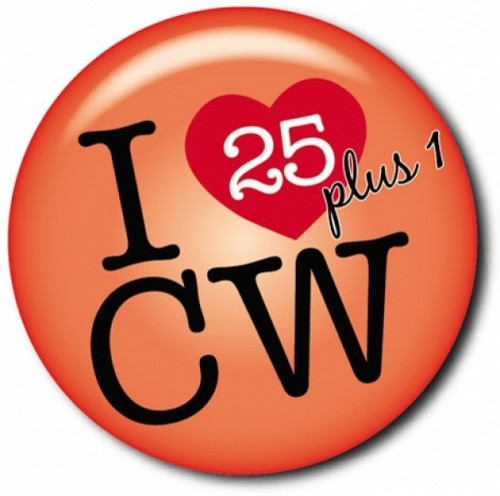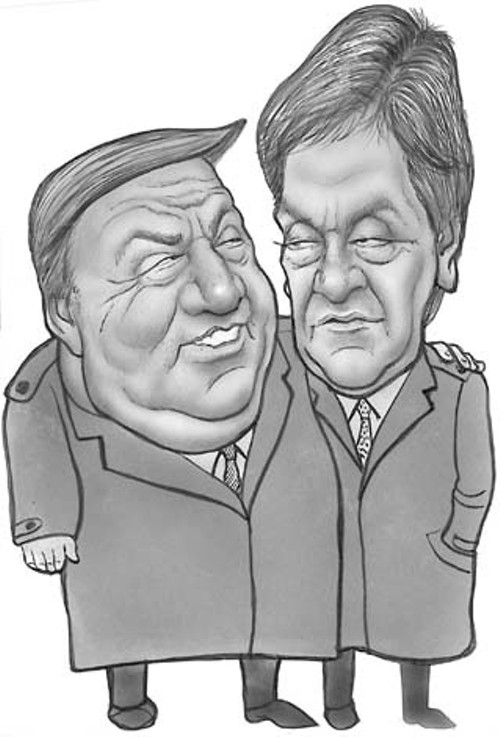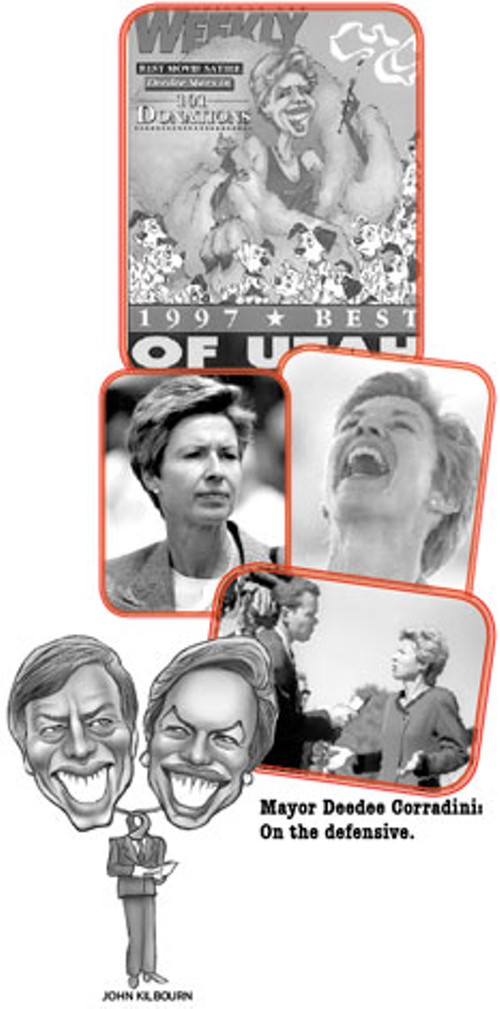John Saltas had been publishing The Private Eye newsletter for four years when he found himself in an uncomfortable place—the horse latitudes, stuck on a windless sea. He had just transitioned the paper from a direct-mail newsletter to a street publication. He was carrying debt, had only crumbs of operating capital and would lie awake most nights with anxiety. Truth be told, he was on the verge of calling it quits.
Hoping for inspiration, he found himself loitering in the library of the old University of Utah communication department, then located in the LeRoy Cowles building on Presidents Circle. Long graduated, he didn’t actually belong in that library, so when the librarian peered around the corner and asked if he needed help, he blindly reached for a magazine off the shelf and told her he was good.
His random choice turned out to be a magazine called Press Time, which featured an article about the Association of Alternative Newsweeklies (AAN), a trade group based in Washington, D.C., which in the late ’80s was made up of less than 40 newsweeklies. Thumbing through the article, reading interviews with founders of papers he’d long admired—the Chicago Reader, The San Francisco Bay Guardian, Denver’s Westword—Saltas had his epiphany (so much so that he made off with the magazine): Private Eye would one day be a peer to those publications.
First, though, he needed to join AAN—no easy feat, it turned out. AAN screens its members and only admits those that meet stringent standards (even today, the association has only 130 members). Papers must be general interest (as opposed to those that cater to music, gay issues, fishing, etc.); and must publish at least 24 times a year. Papers are expected to be a true alternative voice to the mainstream media in their communities. For most, it takes several tries. In fact, one AAN insider told Saltas that Private Eye had a “snowball’s chance in hell” of getting in when he applied. That’s all Saltas needed to hear: Private Eye was accepted on its first try in 1989, just three months later.
Once in the “club,” Saltas began learning the ins and outs of newspaper operations. He had one thing going that would prove to be the secret of the paper’s success: established ties to clubs, taverns and restaurants. “I’d never worked at any other newspaper before,” he says. “The first four or five years as a private-club newsletter were the perfect incubation period because I learned to do everything. It took a long time. Meanwhile, I was learning newspapering and building relationships with every club owner from Logan to St. George.”
During that time, private clubs weren’t allowed to advertise in newspapers, so no competition could develop. In 1988, when new Utah Department of Alcoholic Beverage Control rules were interpreted to allow clubs to advertise in the media, “I put the paper on the street instead of mailing it, and we immediately had an advertising base that no one was able to capture from us. That’s what got it going—what kept it going,” Saltas says.
The ‘Free’ in Freelancing
Saltas had already pulled together an impressive editorial team—freelancers and columnists such as John Harrington, Mary Dickson and Ron Yengich—and he’d rented an office in the heart of historic Midvale. Future editor Ben Fulton got his start freelancing for the paper during the Midvale days. Pay was minimal to nonexistent. Saltas would shuttle carless employees to and from the office, or on deadline days they might all work late and crash at the office.
Yet, the early days were a rush. “There was a certain sense of exhilaration not knowing if the railroad track leads over a cliff or not,” Saltas recalls. “And you had no brakes. People who’ve been on the edge know this. Some are frightened of it and some get exhilarated. And not knowing was a lot of fun, because we were just speeding and, man, what’s going to happen? We’re going faster, but it’s exhilarating. So, let’s do some more of it, make it go faster, even though it could wreck.”
One writer, Tom Walsh, stuck around long enough to become Saltas’ managing editor in 1992, and together they moved the paper’s offices downtown to 400 South, a few doors east of what was then Port O’ Call.
“Tom came from KSL broadcast news and had never been a print news editor,” Saltas says. “He really had to reinvent himself as a writer/editor. He set the tone for playing hardball. When Tom got you in his sights, he wanted to bite.”
Walsh knew of a former BYU journalism professor named Lynn Packer (nephew of Boyd K. Packer, president of the LDS Church’s Quorum of the Twelve Apostles) interested in freelancing for Private Eye. Packer had a long history of questioning authority ever since he had served as a military broadcast news anchor in Vietnam. “I’ve always been coming out of that ’60s idealism movement, that’s just part of my generation. Tom Walsh was a lot like that, he was motivated by a lot more than just, ‘OK, I want to be editor of a paper and tell people what to do.’ He was concerned with the content and what was being reported. Tom, I think, played a key role in taking the paper up a couple of notches professionally. He wanted to improve the substance and the content,” Packer recalls.
“I had developed this admiration for the paper,” Packer says. “Having been a journalist in Utah, I appreciated the fact that the state really needs an independent voice maybe more than other states. The Tribune and the Deseret News were sort of joined at the hip through the Newspaper Agency Corporation. There really was not competition between the two papers and both of them were dodging what I thought were important stories.
“I also liked the fact that the paper appealed to the gay community. It wasn’t a gay newspaper, but it was a liberal newspaper that gave voice to gay issues, something that was sorely lacking in Utah, as well,” he says.
The Gift of Deedee
Packer wrote an investigative series on the Bonneville Pacific Corp. in the early ’90s, which looked at how former Salt Lake City Mayor Deedee Corradini and her one-time business partners funneled assets from bankrupt Bonneville Pacific, through offshore companies, to themselves.
“I used to tell my students at BYU: ‘No story is worth going to jail over, and that’s why you need to draw the line,’ ” Packer says. “But when I was working on the Bonneville Pacific story, there came a time where the line presented itself, and I took a chance and went over it. I was lucky.”
Why’d he risk it? “It was important enough to see this tied to the Olympics. I never knew for sure why Corradini was able to get Orrin Hatch—a Republican—to go to bat for her, but it clearly was the Olympics. Utah badly wanted to get the games, and it just would not have looked good to have the mayor—one of the primary people pitching for the games—indicted for fraud.
“The other interesting thing was Bonneville Pacific: It wasn’t the template for Enron, but it was a forerunner. It was the same type of scam as Enron. Bonneville Pacific was a mini-Enron and shared many of the same characteristics that came a few years later with the Enron scandal.”
The Bonneville Pacific series led to an in-depth Packer investigation of “DeedeeGate” or “Giftgate,” where it was alleged Corradini used her office as mayor to solicit more than $231,000 in cash and loans to cover her debts in bankruptcy court.”
With such formidable muckraking skills, why didn’t Lynn Packer go to work as a reporter for Private Eye? “I was making far more money consulting. In fact, the money that I made consulting enabled me to do this. I considered what I did for City Weekly sort of like a duty. I enjoyed doing it, and I thought it was important to do. There were many other writers for City Weekly who had the same attitude—they weren’t writing for the money, they were writing because it was important that nobody else was telling stories like this. John Saltas had this gift to find them, to keep them happy—because it wasn’t with the pay—and keep it going. It was an enormous accomplishment on John’s part.”
The admiration would appear to go both ways. Of Packer’s journalistic chops, Saltas says, “Lynn Packer was a bull in a china shop. He’s so ethical, talented, professional—a great individual. Back then, we had an open turf. We had Packer’s stories for three or four years, untouched. That’s how pathetic the dailies were. They used to read our paper for scoops.”
More by Jerre Wroble
-
Donate to City Weekly and keep Salt Lake's local news free, independent and punchy
Opinion
- Dec 20, 2023
-
Utah Shakespeare: So Much Drama
Recapping a visit to Cedar City
- Sep 4, 2023
- More »
Latest in Cover Story
Readers also liked…
-
Forget the family pedigree—Robert F. Kennedy Jr should not be the next president of the United States
Trojan Horse
- Jun 21, 2023
-
Women decry harassment and toxic culture at St. George auto dealership
Men at Work
- Oct 11, 2023








